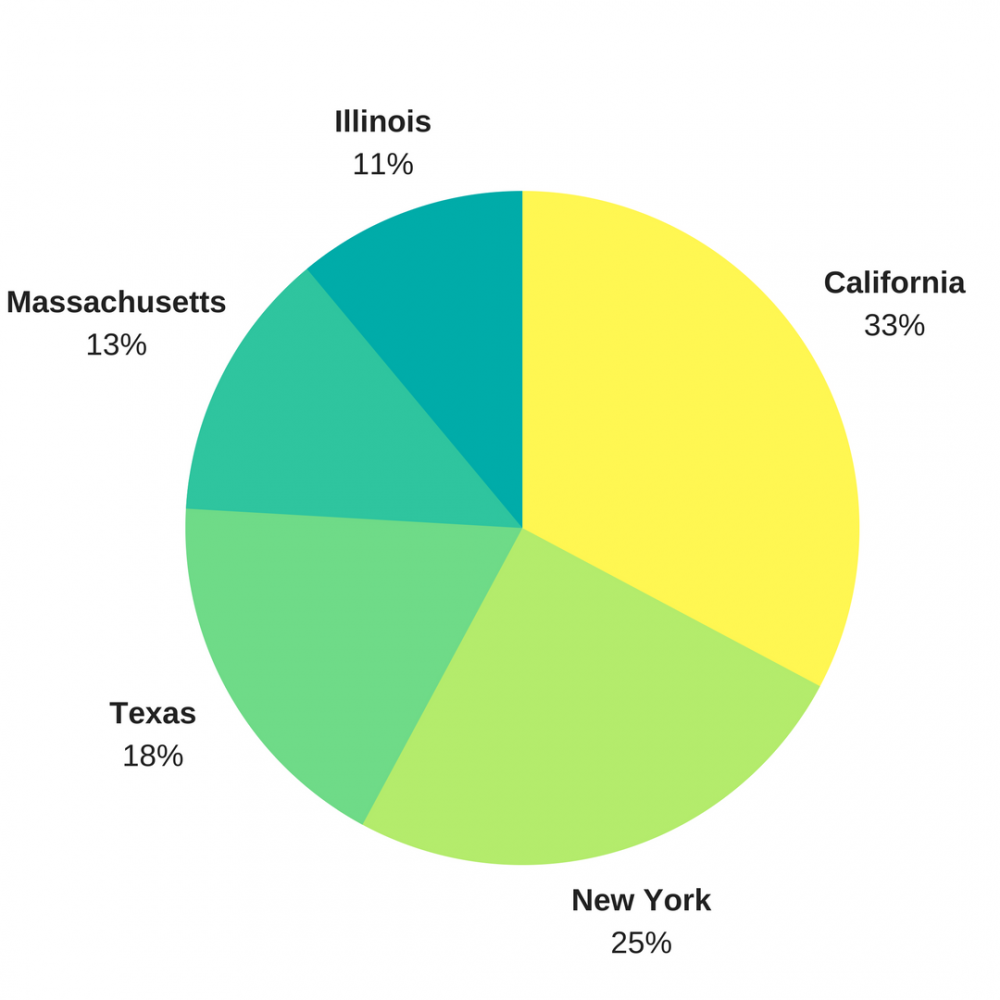Why College Admittance Rates are Dropping
Title : Top 5 States with Highest Percentage of International Students California admitted 33% of all international applicants, putting greater stress on the underfunded UC System. New York and Texas saw the second and third highest enrollments of foreign students, respectively. Data gotten from Institute of Higher Education. LA Times Graphics
April 15, 2017
As seniors receive their college acceptance letters and decide upon their future schools, many are surprised by the ever-decreasing rates of admittance to colleges. Though standards for test scores, GPAs, and extracurriculars are rising, admittance percentages at schools nationwide are doing the opposite. Three main factors, of size, global competition, and yield, all contribute to a rapidly changing admissions process at US colleges.
Colleges base their acceptance off of several factors but the simplest one is space. As most colleges guarantee first-year housing such as dorms for incoming freshman, they must not exceed the allocated space when admitting students. Colleges also must factor in class sizes. Specifically, they must consider how many classes they must provide and how large these classes. This is especially true for required courses at a college.
The second contributing cause is that of greater competition. In recent years, international students have begun vying for spots in foreign colleges as well. A greater number of applicants corresponds to greater competition for seats, which is often amplified by the fact that international students pay more in tuition and fees. This spike in international students, with the Institute of Higher Education finding an all-time high of 1 million foreign students coming to the US for college in 2015, has affected California’s college admissions the most. California saw the arrival of nearly 150,000 international students in 2015, the highest of any state, which puts additional stress on the already underfunded UC system. The 2014 UC Regents meeting presented data showing a decreasing amount of state funding received over the past thirty years.
As acceptance rates decrease, students apply to more and more colleges. An ambitious student in the 1990s may send in an application to seven or eight schools. Now, students’ lists creep quickly into the tens and twenties. This increase in application is also due to the relative ease of applying now compared to twenty years ago. Students formerly had to hand-write or individually copy their essays on a typewriter, and physically mail in applications to colleges. Now, with general applications like The Common App, students have thousands of colleges localized into one single place.
These factors contributing to lower admission rates have set off an undesirable cycle. A lesser known factor is yield. Yield is the percentage of admitted students who accept a spot at a university. Colleges can display their popularity among students with high yield rates. Thus, when considering students, some colleges choose students they believe are most likely to attend. A student can improve his or her standing by demonstrating interest, be it through visiting campus or attending college fairs. While doable when applying to a few colleges, these acts demonstrating interest grow difficult when one has to do so for such a large number of colleges.










